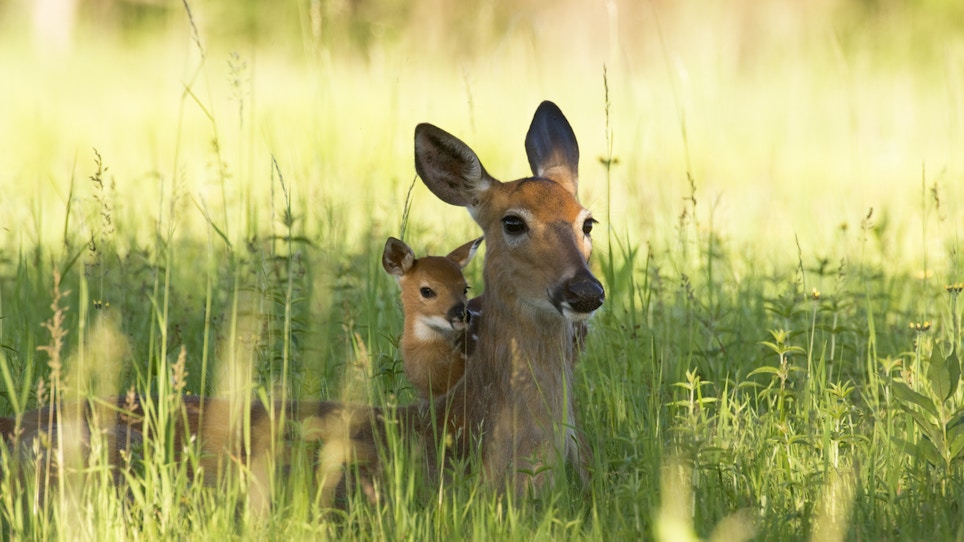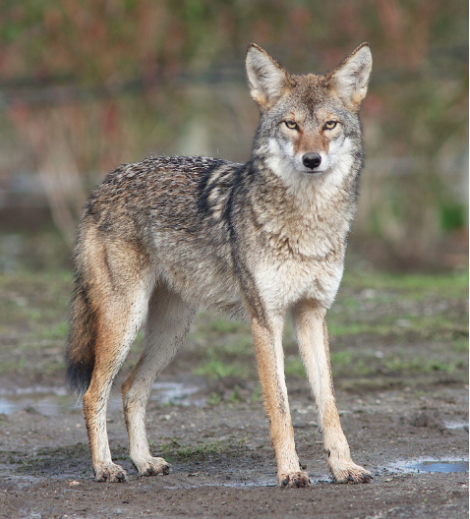No matter where you go and no matter what state you live in, hunters blame coyotes for low deer numbers. Even though politicians seem to ignore science when making wildlife decisions, I don’t. Being a retired wildlife professor, I base things on what the data show, and I’ve tried to do that over the years in this Know Whitetails column.
So does the data show that coyotes are the bad guys when deer numbers drop? Do data show there’s a way to lower coyote numbers if indeed they are the bad guys?
This coyote story is really about fawn mortality, because coyotes eat fawns.
Fawn Survival Increases as Farmland Increases
According to a new study, fawn survival increased as the percent of agriculture land increased. In other words, more forests, lower fawn survival; more cropland, higher fawn survival — at least up to a point. When they tweaked the data, they found that predation (all predators, not just coyotes) was highest in mixed forest and agricultural landscapes. Human-caused mortality was also the greatest there too. The study made no references to a specific predator, but it’s interesting that fawn predation is highest where you have the most forests.
Coyotes Eat Fawns
Researchers at the University of Delaware looked at deer predation in a very unique way. They noted that coyote/fawn predation varies across the country from 14 percent mortality caused by coyotes to 87 percent.
Here’s the unique part of this research: They studied a large area that had lots of deer and almost no predators. No bears, very few bobcats and very few coyotes. They ran various predator surveys in that area, deployed trail cameras and recorded only one coyote. They examined data from coyote seasons that started in 2014 and found that only nine had been harvested in that area. Thus, the area was not totally free of coyotes, but there were very few. I’m not sure why this area had deer and few predators, but that was the case.
After surveying for predators, they went in and captured a number of does and put vaginal implants in them. When those does gave birth, the implants were expelled and sent out a signal. Researchers will then immediately go in and capture the fawns (54 captured). In this way, they don’t miss any predation because they get the fawns as soon as they are born. They also captured fawns by cruising and looking for does that had just dropped their fawns (55 captured). All fawns were radio-collared so that when that fawn died, they would find it right away.
If Not Eaten By Predators, How Do Fawns Die?
In all fawn mortality studies, most of the mortality occurs in the first month. That was true for this study too. Why? Because 39 percent of the fawns were dead within 30 days. In fact, 50 percent of those who died did so in the first seven days. Survival after 90 days was 54 percent. Considering that there was no predator-caused mortality, you would think that survival rates would be higher.
If none were eaten by predators, how did they die? Some starved, others died from bacterial infections, some died from pneumonia and some drowned. I’ve never given much thought to the fact that rain might kill fawns, but it apparently does. In this Delaware study, one inch of rain a day doubled mortality. Wow! Even small amounts of rain in June can kill fawns. They also found that fawns from 4-year-old does and older had the highest survivor rates. Fawns from those does were heavier.
No fawn mortality studies have ever shown the impact of doe maturity and rain on mortality. Their conclusion was that predation might be less of a limiting factor then we once believed. Interesting study.
BONUS: What Kills Yearling Bucks?
Before leaving Delaware, let me add that another study the University of Delaware folks did in that predator-free area looked at what killed yearling bucks. Forty-percent died, and hunting got 79 percent of those that died. Cars got 13 percent, disease got 11 percent. Again, none died from predation because there were few predators there.
A related article considers the difficulty of managing coyote predation on deer. Sometimes hunting and trapping coyotes offers little change in fawn mortality rates and, thus, deer populations.
Featured photo: iStock







